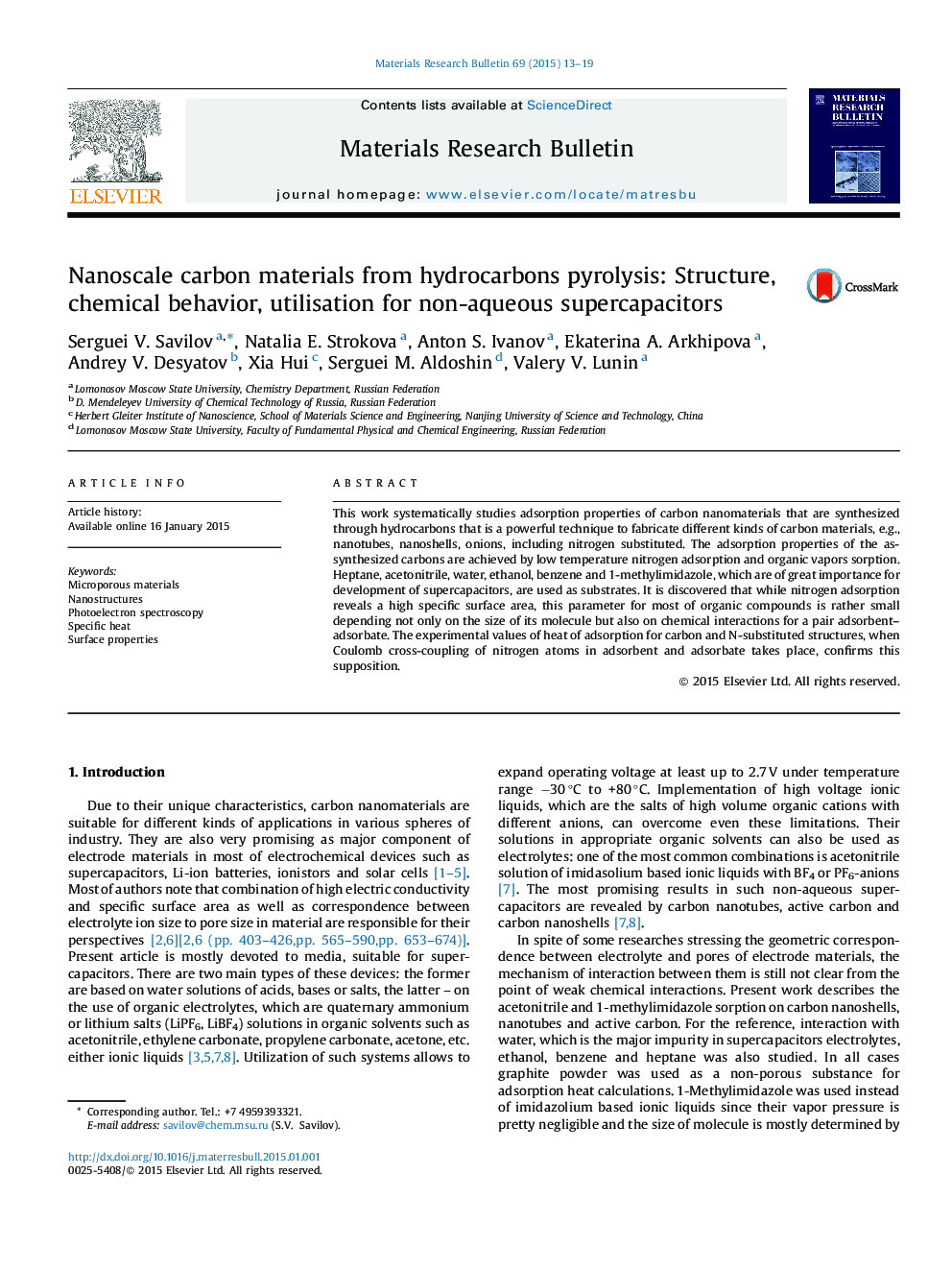| کد مقاله | کد نشریه | سال انتشار | مقاله انگلیسی | نسخه تمام متن |
|---|---|---|---|---|
| 1487776 | 1510706 | 2015 | 7 صفحه PDF | دانلود رایگان |
• N-doped and regular carbon nanomaterials were obtained by pyrolitic technique.
• Dynamic vapor sorption of different solvents reveals smaller SBET values.
• Steric hindrance and specific chemical interactions are the reasons for this.
• Nitrogen doping leads to raise of capacitance and coulombic efficiency with non-aqueous N-containing electrolyte.
This work systematically studies adsorption properties of carbon nanomaterials that are synthesized through hydrocarbons that is a powerful technique to fabricate different kinds of carbon materials, e.g., nanotubes, nanoshells, onions, including nitrogen substituted. The adsorption properties of the as-synthesized carbons are achieved by low temperature nitrogen adsorption and organic vapors sorption. Heptane, acetonitrile, water, ethanol, benzene and 1-methylimidazole, which are of great importance for development of supercapacitors, are used as substrates. It is discovered that while nitrogen adsorption reveals a high specific surface area, this parameter for most of organic compounds is rather small depending not only on the size of its molecule but also on chemical interactions for a pair adsorbent–adsorbate. The experimental values of heat of adsorption for carbon and N-substituted structures, when Coulomb cross-coupling of nitrogen atoms in adsorbent and adsorbate takes place, confirms this supposition.
Figure optionsDownload as PowerPoint slide
Journal: Materials Research Bulletin - Volume 69, September 2015, Pages 13–19
